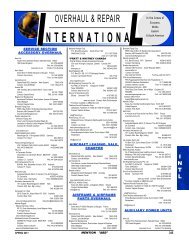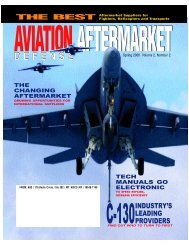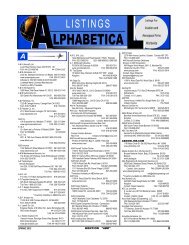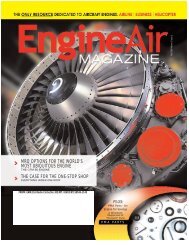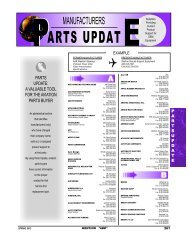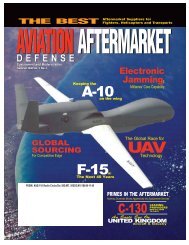Create successful ePaper yourself
Turn your PDF publications into a flip-book with our unique Google optimized e-Paper software.
pressure on any given area of concern<br />
through their individual power to block<br />
presidential appointees from approval. If<br />
a Senator was concerned that some<br />
aspect of military operations was not<br />
being adequately addressed, he or she<br />
could use this power to bring attention<br />
to the problem and seek resolution.<br />
Following Boeing's successful<br />
protest against the Northrop Grumman-<br />
EADS tanker contract, the Alabama<br />
Senate delegation put a hold on all<br />
presidential nominees for DOD<br />
positions. This reportedly was due to<br />
their unhappiness that the tanker<br />
contract was overturned, as the aircraft<br />
would have been built in Alabama. This<br />
same blocking procedure could be used<br />
in an attempt to remedy an issue of<br />
safety or maintenance practices.<br />
CONCLUSION<br />
It's impossible to declare any operation<br />
or procedure as completely safe, no<br />
matter how carefully audited and<br />
conducted. Accidents can happen,<br />
despite the best preventive efforts. But<br />
the U.S. military's acceptance of<br />
standardized, safety-based refueling<br />
procedures, along with the legislative<br />
branch's numerous institutional<br />
oversight groups, have been effective in<br />
proactively addressing safety concerns.<br />
Together, the checks and balances<br />
provided by these institutions, along<br />
with the dedicated work of personnel in<br />
the field, appear to make it unlikely that<br />
the lapses blamed for the loss of the<br />
RAF's Nimrod could fester within the<br />
U.S. armed forces with similarly tragic<br />
results.<br />
AAD<br />
AIRCRAFT REFUELING<br />
SPECIAL EQUIPMENT<br />
U.S. Air Force Aerial Refueling<br />
Platforms:<br />
The KC-135 Stratotanker provides<br />
the core aerial refueling capability<br />
for the U.S. Air Force. The KC-135<br />
is derived from Boeing's model<br />
367-80 aircraft, from which the 707<br />
airliner also was developed. The<br />
first KC-135 was delivered to the<br />
U.S. Air Force in 1954, the last in<br />
1965.<br />
Most KC-135s have been<br />
retrofitted with CFM International's<br />
CFM-56 engines and are<br />
designated as R or T models. Thus<br />
equipped, these aircraft can carry<br />
150,000 pounds of transfer fuel.<br />
The Air Mobility Command<br />
manages an inventory of more<br />
than 415 Stratotankers, of which<br />
the U.S. Air Force Reserve and U.S.<br />
Air National Guard fly 235 in<br />
support of the AMC's mission.<br />
The KC-10 Extender<br />
The KC-10 Extender is a derivative<br />
of Boeing's DC-10-30 airliner. It<br />
entered service in 1981.<br />
Capable of carrying 356,000<br />
pounds of transfer fuel, the KC-10<br />
can refuel via boom at a maximum<br />
rate of 1,100 gallons per minute,<br />
and via a probe and drogue<br />
system at a maximum refueling<br />
rate of 470 gallons per minute. The<br />
Air Mobility Command currently<br />
has fifty-nine of these aerial<br />
tankers in its inventory.<br />
WWW.ABDONLINE.COM AVIATION AFTERMARKET <strong>DEFENSE</strong> | SPRING 2010<br />
29



